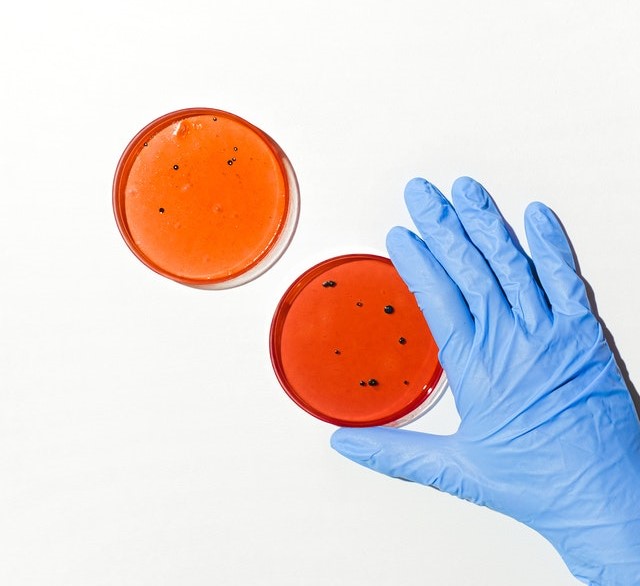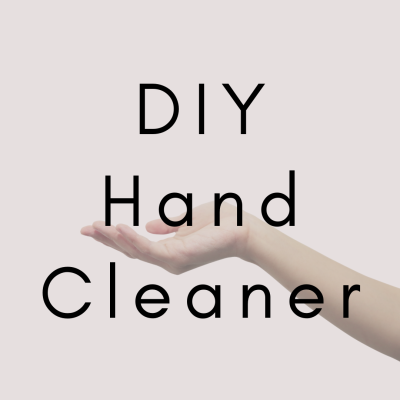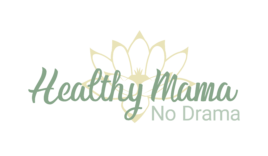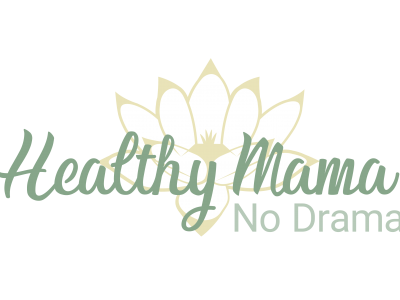Hand sanitizer. You squirt it on, feel that cooling tingle, let it dry, and then you suddenly feel clean. You think (hope?) that this hand sanitizer habit of yours is protecting you from all the illnesses floating around. After all, it’s a great, on-the-go solution for cleaning your hands when soap and water are unavailable, right? But, can I propose to you that hand sanitizer is not worth the risk? In fact, hand sanitizer can actually have the opposite effect. I’ll share why below and then keep reading for some simple alternatives!
But first...a little fun fact
In middle school, I conducted a science fair experiment on the effectiveness of hand sanitizers. I tested 3 different brands of hand sanitizer (cheap, middle of the line, and top of the line). I used petri dishes with lamb’s blood in them to determine which hand sanitizer prevented the largest amount of bacteria from growing. I sound smart now, don’t I? The results? You get what you pay for when it comes to hand sanitizers.

That being said, you need to take caution even with the most effective of hand sanitizers. Why? There are two primary reasons: harmful ingredients and unintended consequences.
And, in case you were wondering, I did win an award for my experiment. I was pretty proud of my little middle-school-definitely-not-a-science-expert, self.
HARMFUL INGREDIENTS
Alcohol
Hand sanitizers often contain isopropyl or ethyl alcohol. This can be harmful to anyone, but particularly to children. Most hand sanitizers contain between 60 to 90 percent alcohol. According to CNN Health, a 2-ounce bottle of hand sanitizer may contain as much alcohol as four shots of vodka. Whoa! This is enough to cause alcohol poisoning if ingested. Yikes! Additionally, alcohol-based hand sanitizers can be very drying to the skin and can cause skin or eye irritations. It also makes the hand sanitizer a fire hazard. So, needless to say, hand sanitizers with alcohol need to be used with adequate precaution!
Triclosan
Some companies have caught on to the need for non-alcohol-based hand sanitizers. However, the non-alcohol alternatives typically contain triclosan. Triclosan is added to products to prevent bacterial contamination. In short, it has antibacterial properties. Triclosan is found in everything from antibacterial soaps and body washes, toothpastes, and cosmetics, to athletic wear, food packaging, kitchenware, furniture, and toys.
As you can see, it’s kind of everywhere. It’s for this reason that more concern is warranted than previously thought. Just think about it – over a lifetime of being exposed to all of these products with triclosan, what kind of impact will that have on your body?
Well, let me tell you...
Studies have shown triclosan can:
- cause bacteria resistance to antibiotics
- change the way hormones work in the body
- disrupt the endocrine system
- potentially harm the immune system
- increase a child’s risk of developing allergies or hay fever
We know for a fact that triclosan remains in our bodies because it has been found in human serum, urine, and breast milk. Hello, body burden!! To make matters worse, we know that the triclosan found in breast milk get transferred to the baby. If that one doesn’t hit home for you, how about the fact that triclosan has been found in treated water. So, even when treated, the triclosan cannot be fully cleansed, resulting in it going right back into the environment and into our homes…and our bodies!
Parabens
Parabens are added to products to prevent microbe growth. They are, unfortunately, found in a significant number of personal care products. A study found parabens in 70-100% of the urine samples of its participants, depending on the paraben. Parabens are linked to cancer and endocrine disruption, among other health concerns.
Phthalates
Phthalates are used to make plastics more flexible and durable. They’re found in hundreds of products. Everything from toys and product packaging to personal care products and detergents. When absorbed into the body, phthalates have the ability significantly mess with our hormones. In females, they can immitate or block the hormones. In males, phthalates interrupt male sexual development. Additionally, like triclosn, phthalates have been shown to cross the placenta. Knowing all of this, it’s no wonder why things like infertility, hormone imbalance, interrupted sexual development, and other issues are on the rise.
"Fragrance"
This is one of my “soapbox” topics, so I’ll try to keep this short and sweet. The term “fragrance” on a product’s ingredients list is a huge red flag. It’s usually a blanket term for (in my words) “this product contains artificial fragrances that are toxic to your health.”
Did you know...
There are more than 2000 chemicals that can be undisclosed under the blanket term "fragrance" because they’re considered “proprietary information?"
The ingredients used to add scent to a product are typically harsh chemicals. That is, unless they’re disclosed in the ingredients. Think about it. A company that uses clean ingredients WANTS to disclose that information! The toxic artificial fragrances are associated with allergies, are hard on the reproductive system, can cause breathing issues, and more. They’re found in everything from personal care products like soaps and lotions, to perfumes and candles, cleaners, etc. Instead, look for hand sanitizers (and other products) that use natural sources of fragrance like essential oils or other plant-based ingredients.
UNINTENDED CONSEQUENCES
Super Bugs
Multiple studies have shown that use of hand sanitizers (and antibacterial products) has resulted in bacteria becoming resistant to those products. This means your resistance to illnesses is lowered when you use antibacterial products. The bacteria “bugs” are harder to get rid of and, therefore, multiply. These “super bugs” then require stronger methods to hopefully be eradicated.
Hold on one moment while I grab my soapbox.
Ok, getting out my megaphone now…
DO YOU SEE IT?! People use hand sanitizer to protect themselves but at the end of the day it’s having THE OPPOSITE EFFECT!
Side note shocker
On a recent flight I noticed the young lady sitting across the aisle from me was basically applying hand sanitizer throughout the entire 2 hour flight. After every surface she touched she’d grab that little bottle, squirt, and lather. And, unfortunately, this is far too common. Especially right now in the middle of this pandemic.
I get it, airplanes are gross. For example, the tray is one of the dirtiest surfaces on the plane. In fact, a study conducted in 2015 found that an airplane tray has 2,155 colony forming units (CFU) of bacteria per square inch. Let me give you some perspective: your toilet seat at home only has about 127 CFU. WHAT?! So, I hear you. You need to protect yourself when traveling. I mean, airlines claim they clean the plane between flights. But, the number of times I’ve gotten on a plane (even in the middle of the global pandemic) and found crumbs and debris stuck to my tray table would indicate they don’t do as thorough of a job as they claim. So, protect yourself while traveling. Just remember there are better, safer ways to do it than hand sanitizer (or disinfecting wipes)!

When I see people like that lady on the airplane, it makes my heart sad. All I can think about is the growing toxic load in their bodies and the health issues that will arise after the overuse of products such as hand sanitizer (and disinfecting wipes!!). This overuse has only been amplified during the global pandemic. If people only knew. But they CAN know. Please consider sharing this!!
Okay, moving on…
Weakened immune system
Ingredients like many of the above leave your body in a place of not being able to fight off the bacteria like it should. The result is good bacteria is wiped out and your immune system is weakened. This is the opposite of what you’re trying to accomplish when using hand sanitizer, am I right?!
Are you convinced yet?
Are you reconsidering the use of traditional hand sanitizers? If not, keep reading. There are some very simple solutions to this problem that should help make the transition easier for you.
- Take a high-quality microfiber with you on the go. Carry in a water-resistant pouch and wipe hands down, shopping carts, restaurant tables, etc. I always have at least one of these in my purse. I keep it along with my stainless steel straws in this. It has 2 compartments with waterproof lining.
- Purchase a hand cleaner with safer ingredients that will do the trick in a much “cleaner” way. See what I did there? My two favorite options are this sanitizing mist or this gel hand cleaner.
- Make your own alcohol-free hand sanitizer with only a few ingredients. These homemade versions will not only sanitize your hands, but also moisturize them too. Check out the 4 recipe options below!

Protective & Immune Boosting Hand Cleansing Gel
- 5 Tablespoons aloe vera gel
- 4 Tablespoons water
- ¼ teaspoon vitamin E oil
- 8-10 drops doTERRA On Guard essential oil blend
- 2/3 cup rubbing alcohol (optional)
In a bowl, combine aloe vera gel and vitamin E oil. Add 8-10 drops of On Guard essential oil blend to the aloe vera mixture. Add water and mix well to combine. Add more or less water depending on the consistency you want. Pour into container. (Note: high quality essential oils can be stored in plastic containers if highly diluted. Make sure they are high quality containers). I would personally recommend an amber glass bottle like this to protect your oils from getting damaged in the light.
Hand Cleaning Spray
- 1 Tablespoon aloe vera gel
- 20 drops doTERRA On Guard essential oil blend
- Water
- rubbing alcohol (optional)
In an 8 ounce glass spray bottle, combine aloe vera, and On Guard oil blend. Fill the rest of the bottle with water. Shake until combined. To use, spray on hands and rub together.
Tea Tree Liquid Sanitizer
- 10 drops tea tree essential oil (use a 100% pure, reputable brand – doTERRA is the best)
- 1 teaspoon liquid castile soap
- 1 teaspoon vitamin E oil
- 6 ounces water
Stir all ingredients together and pour into an 8 ounce glass spray bottle. To use, spray it on hands and rub hands together vigorously until they are dry. (Note: high quality essential oils can be stored in plastic containers if highly diluted. Make sure they are high quality containers).
Tea Tree Gel Sanitizer
- 10 drops of tea tree essential oil (use a 100% pure, reputable brand – doTERRA is the best)
- 1 ounce witch hazel
- 5 ounces aloe vera gel
Mix all ingredients together and store in a squeezable bottle. Store in a cool place. To use, squirt a dime-sized drop into the palm of one hand and then rub hands together until they are dry. (Note: high quality essential oils can be stored in plastic containers if highly diluted. Make sure they are high quality containers). I would personally recommend an amber glass bottle like this to protect your oils from getting damaged in the light.
Some of the links above are affiliate links. This means that, at zero cost to you, I will earn an affiliate commission if you click through the link and finalize a purchase. Thanks for your support!
Resources:
Should I avoid products that contain triclosan?
5 hidden dangers of hand sanitizers
Effects of triclosan in breast milk on the infant fecal microbiome
Hand sanitizers may increase norovirus risk
Impact of triclosan on immune parameters
5 reasons why you should stop using antibacterial soaps
Triclosan persistence through wastewater treatment plants
Paraben discussion of human health risks
Tips to avoid exposure to phthalates
Related posts:
- Why Essential Oils Are…Essential If you’ve done even a small amount of researching online about natural health, chances are that you’ve come across essential oils. Their popularity is ever-growing both in the natural world...
- Non-Toxic DIY Dry Shampoo Can I tell you a secret? I don’t wash my hair every day. I don’t even wash my hair every week. It’s not because I’m lazy, it’s because my hair...
- Healthiest Cooking Oils There are many oils on the market today. Some well-known, some not. Many people just grab the cheap and accessible vegetable or canola oil off the shelf without realizing the...
- My daily routine for healthy skin Youthful, healthy skin is something I think we all desire, but many don’t know how to achieve it. As we get older, our skin begins to show signs of aging...

